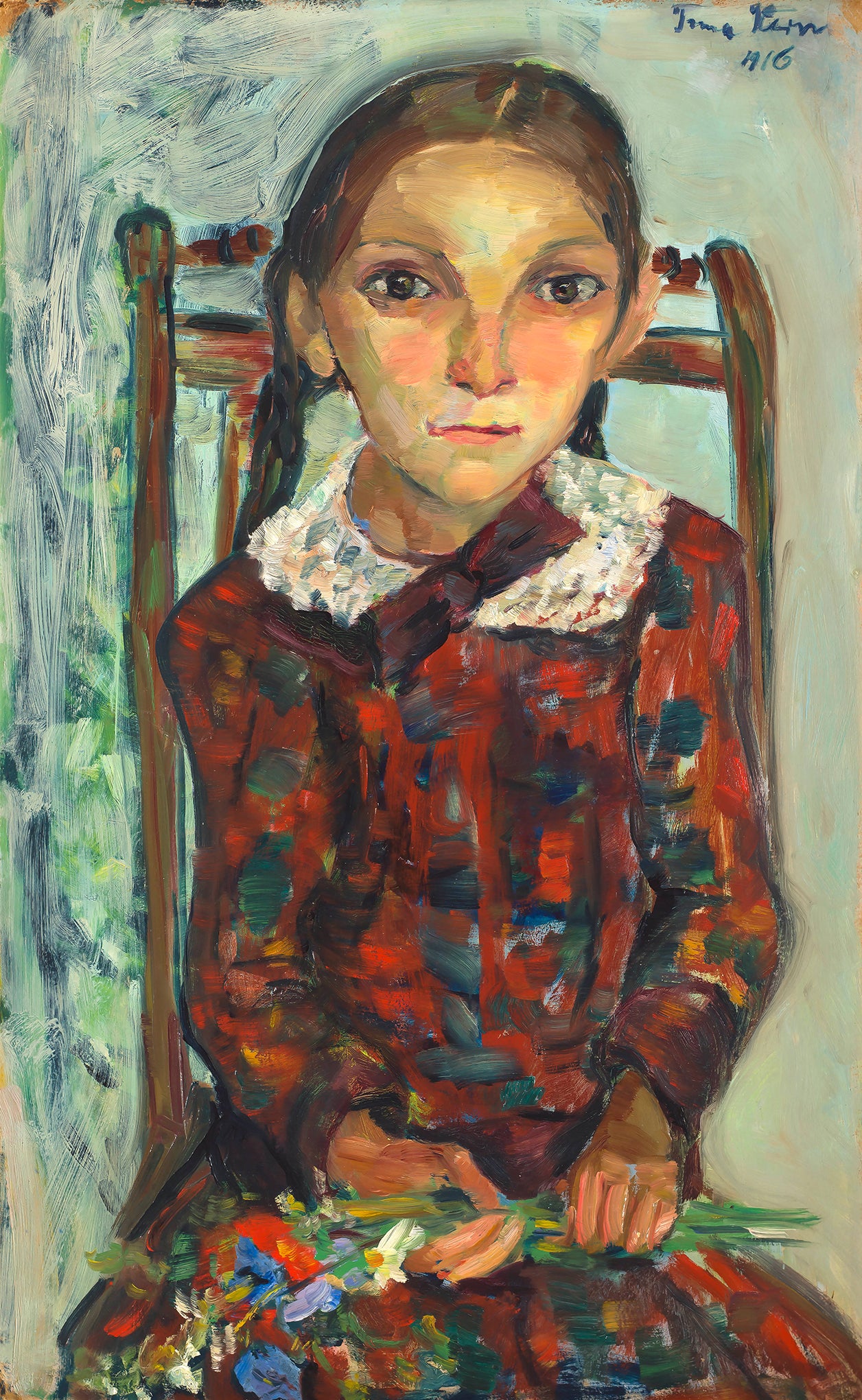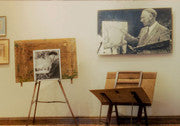
Irma Stern. The Eternal Child. 1916. Oil on board. Collection: Rupert Art Foundation, Stellenbosch
View this work as part of the Celebrating the Love of Art Exhibition in the La Motte Museum until 25 July 2021.
Irma Stern painted The Eternal Child (Das Ewige Kind) in 1916. The picture is of a little girl wearing a red patterned dress with white collar and bow. She sits on the edge of a chair, clasping a bunch of wildflowers on her lap in small, bony hands. Her features were typical of malnourished children in Germany during the war, as is evident from her big head and underdeveloped body and wide-set dark eyes in her pale face.
Stern encountered the girl on a tram one day and felt compelled to draw her to express the misery and distress that war inflicts on all lives. She painted the work from memory, imbuing it with symbolism like the life-giving meaning of the flowers within the constraints of war, implied by the grid of the chair which metaphorically suggests the restricted natural development of the child.
The respected German expressionist painter, Max Pechstein, who endorsed Stern’s experimentalism, approved of the painting, which lead to Stern considering it to be her first important painting that would go on to become her personal icon and a symbol of accomplishment.
Stern never wanted to part with this painting and only sold it to Mrs Huberte Rupert towards the end of her life. The painting was subsequently loaned and exhibited at the South African National Gallery for many years before being returned to the Rupert Art Foundation, where it was also exhibited in Dr A.E. Rupert’s office and the Rembrandt van Rijn Gallery. Thereafter it was decided that it would not be available for loan by other museums. The La Motte Museum is the first external gallery permitted to display this special work again for three months only until mid-May 2021.
Stern’s historical importance rests on her contribution to Modernism by introducing Expressionism to South Africa. She was born in 1884 in the former Transvaal Republic and spent her formative years in Germany, where her vision was shaped by German culture and Modernist practice. She settled in Cape Town in 1920, where her stylistic innovations shocked a conservative, provincial public, but after her death in 1966, her contribution to South African art was undisputed. Stern forcibly brought modern art to the attention of the public and greatly contributed to shifting the perceptions about art in South Africa.
(The Eternal Child will only be on exhibition until mid May 2021).
References:
Arnold, M. 1995. Irma Stern: A feast for the eye. Rembrandt van Rijn Art Foundation: Stellenbosch.
Berman, E. 1983. Art & Artists of South Africa. AA Balkema: Cape Town.
Irma Stern Museum. 2015. Website. Available: www.irmasternmuseum.org.za
Proud, H. 2015. Revisions website. Marianne Podlashuc. Available: www.revisions.co.za











